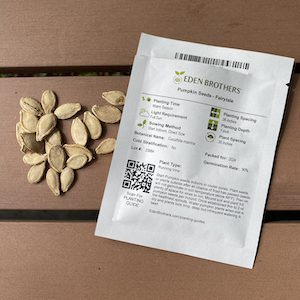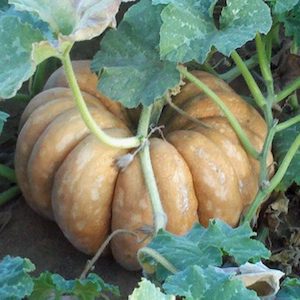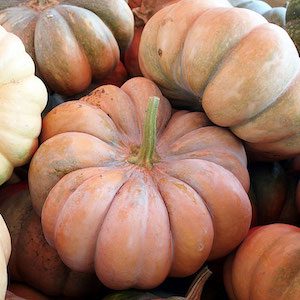The story isn’t a new one – Your pumpkin vine is truly magnificent, boasting a robust and healthy appearance with its lush, deep green leaves and abundant blossoms. Big, gorgeous yellow blooms open and close, but day after day you realize something—the absence of any signs of fruit. What is wrong? Tomatoes and beans are forming in your summer garden, but your pumpkin vine is big and beautiful… and lonely, with no young pumpkins forming. Do you need to intervene? Won’t nature take care of this? You may be wondering whether pumpkins possess the ability to self-pollinate or if your intervention is required. If manual pollination is necessary, how do you do it?
Learn from our gardening friend Linda and her pumpkinless season, and you’ll see that with a little help, you will have beautiful pumpkins come fall. Whenever we see young fruits forming, our gardening hearts swell with pride. When those same fruits wither and die, we are left perplexed, confused, and let’s face it, angry! Before succumbing to panic over the death of fruit, let’s delve into the intriguing realm of pumpkin plant pollination.
Male and Female Flowers
First and foremost, it’s essential to understand that pumpkins, much like other cucurbits, possess distinct male and female flowers on a single plant. Consequently, fruit formation necessitates the cooperation of both genders. The transfer of pollen from the male flower to the female flower is indispensable for this process to occur.

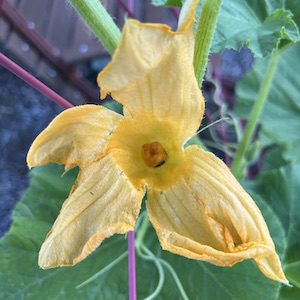
Male flowers bloom on long stems and usually reach high above the leaves. These live on the plant for a single day before wilting, but don’t fret, the vine will produce many more male flowers than it does female flowers. Remain calm. Within approximately a week, the female flowers will grace the plant with their presence, staying low to the vine with a premature fruit beneath it. The male blooms will continue to make their appearance as well.
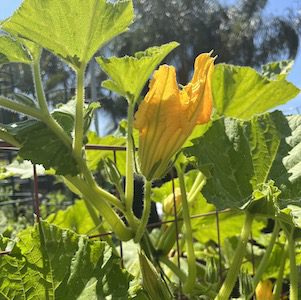
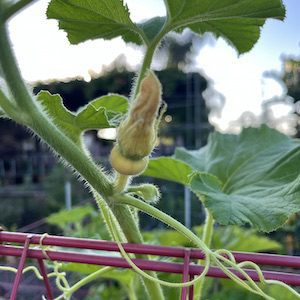
Are Pumpkins Capable of Self Pollination?

In short, the answer is no. Pumpkins rely on bees or, in some cases, human intervention for successful pollination. The male flowers of pumpkins produce both nectar and pollen, while the female flowers contain a higher quantity of nectar but no pollen. Bees play a crucial role in the pollination process by visiting the male flowers, where the sticky pollen granules adhere to their bodies. They then proceed to the nectar-rich female flowers, facilitating the transfer of pollen. This intricate dance between bees and flowers enhances the quality of the resulting fruit through increased pollinator activity.
Despite the presence of both male and female flowers, you may encounter difficulties with pumpkin plant pollination for various reasons. Factors such as the use of broad-spectrum pesticides in the vicinity or unfavorable weather conditions such as excessive rain or heat may impede bee activity. In such cases, manual hand-pollination of pumpkins becomes a potential necessity.
In Linda’s garden, she experienced a summer when none of her female pumpkin blossoms were pollinated, resulting in, you guessed it, no pumpkins. Surely there were enough bees in the area to let nature do its thing, but alas, come Halloween, she was pumpkinless. From now on, when she visits her garden in the early morning hours and sees both male and female blossoms open, she intervenes by hand pollinating. She see the bees and knows they will do their work, but she helps out a little…just…in…case. Because there is nothing sadder than having a summer garden filled with pumpkin leaves, yet having to purchase a pumpkin from someone else’s garden for the holidays.
How to Hand Pollinate
Before embarking on the task of hand-pollinating your pumpkin plant, it is crucial to distinguish between the female and male blooms. To identify a female flower, examine the point where the stem connects with the flower. You will notice a small structure resembling a miniature fruit. This is the ovary, which indicates a female bloom. On the other hand, male flowers tend to be on stems stretched taller in comparison, devoid of immature fruit, and often appear in clusters.
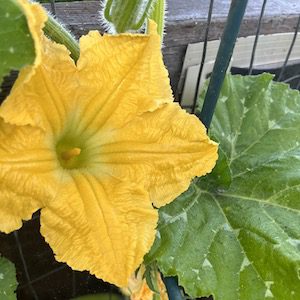
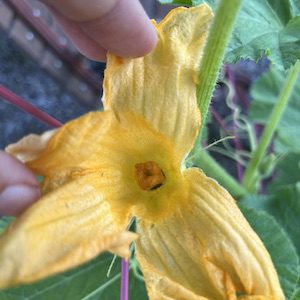
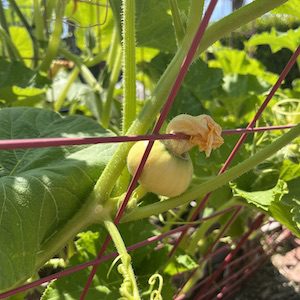
Methods
There are two straightforward methods for hand-pollinating pumpkins.
You can choose either a small, delicate paintbrush or a cotton swab to perform the task. Begin by gently touching the anther located at the center of the male flower. The swab or brush will collect pollen during this process. Next, carefully transfer the collected pollen by touching the swab or brush to the stigma at the center of the female flower. This simple action facilitates the pollination process and encourages fruit development.
Another approach to hand-pollination involves removing the male flower and gently shaking it over the female flower, causing the pollen granules to be released. Alternatively, you can remove the entire male flower, including its petals, to create a natural “brush” with the pollen-laden anther (photos 1 and 2 below). Then, touch the anther to the stigma of the female flower several times, gently rubbing them (photos 3 and 4 below). That’s all it takes!
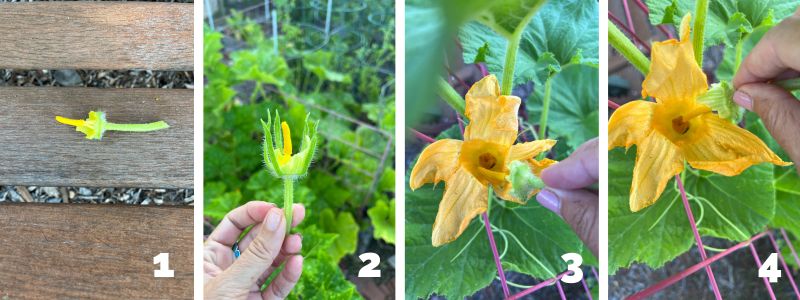
Once successful pollination has taken place, you will observe the ovary starting to swell as the fruit begins to develop. However, if fertilization did not occur, the ovary will eventually wither away. Nevertheless, we have complete confidence in your abilities as a hand pollinator, and are certain you will achieve great results.
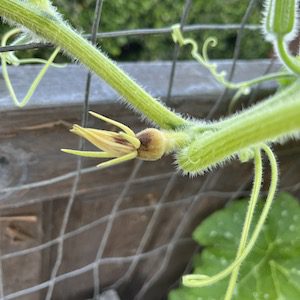
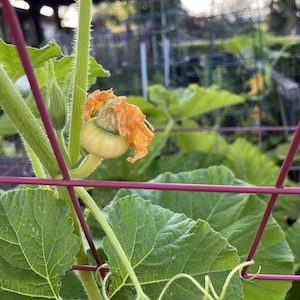
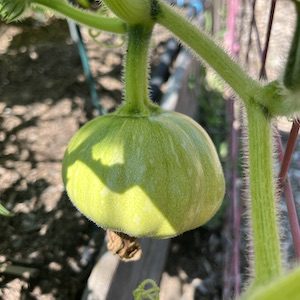
The pumpkins featured throughout this blog are Fairytale Pumpkins (see from seed, to vine, to final result below). They’re perfect for pies and bread! Explore 20+ other pumpkin seeds in our online catalog.
